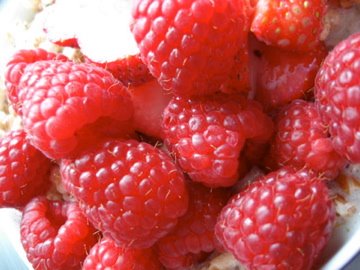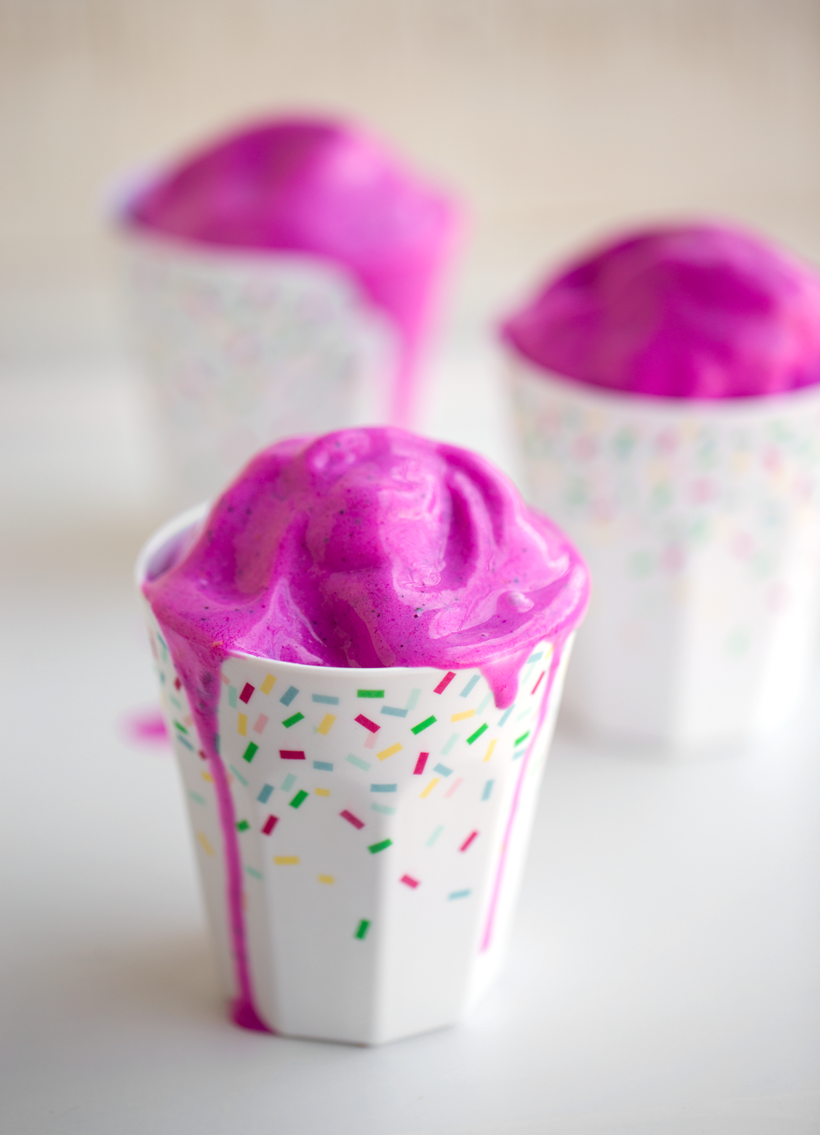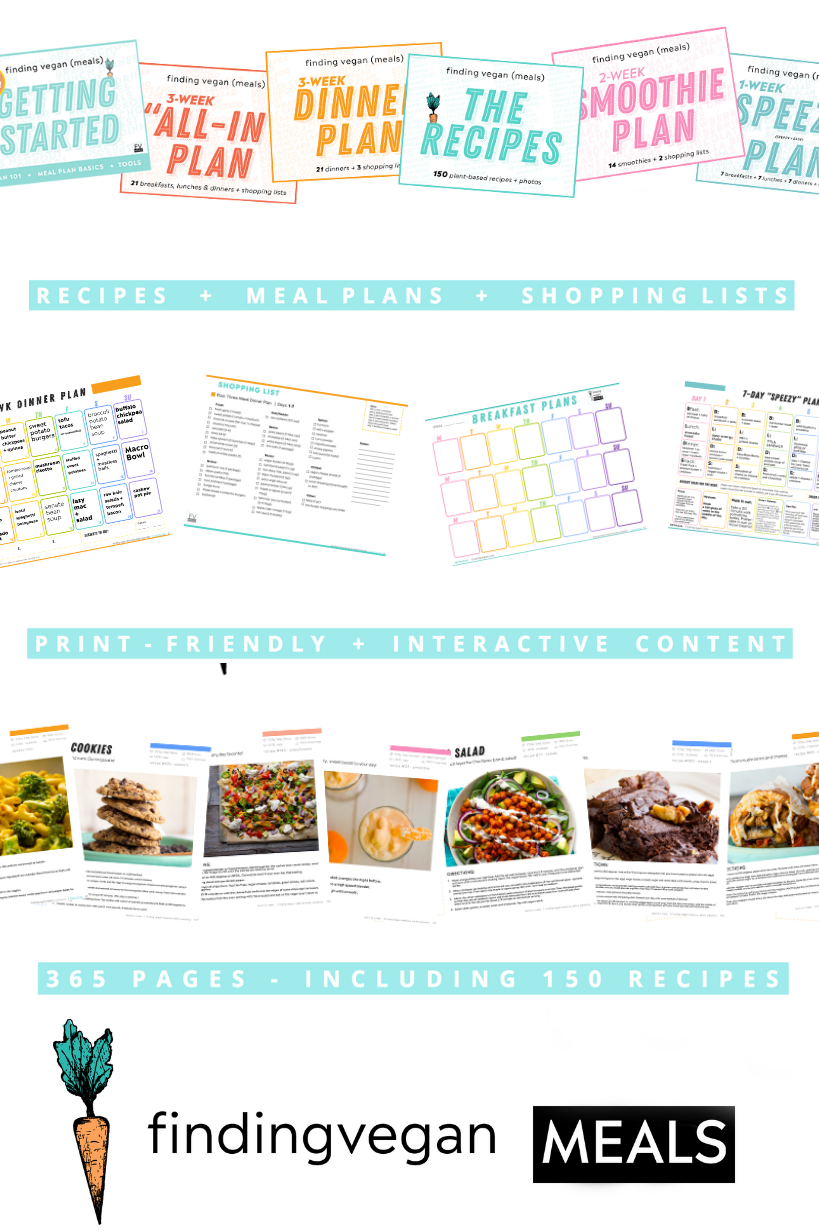BUZZWORD: PHYTOCHEMICALS.
Phytochemicals are a new breed of nutritional analysis. The term "phytochemicals" gets thrown around a lot when discussing the health benefits of fruits and veggies. Well unlike the short list of vitamins you may hear about...vitamins A,D,E,K,C,B'S,...ect...
....there are over 900 phytochemicals . And that only counts for the ones that have been identified.
Some of the major phytohemical groups include flavonoids and carotenoids.
But lets slow doen. Just WHAT IS a phytochemical, and why are they only found in fruits and vegetables?
A bit of science background: A phytochemical is quite simply any unique characteristic in the form of a property/chemical substance that a plant/fruit contains. These characteristics have developed over the course of millions of years in order to help the plant survive through the harsh environment of the earth. Plants are living things and their only defenses are the unique properties that they can develop through evolution over time--properties which enable survival. Tomatoes red coor help attract the precious sunrays, the thick nutrient dense skin of an orange helps protect the delicate inner flesh and the dark purple nutrient rich flesh of an acai berry helps it survive the harsh environment of the brazillian rainforrest.
Getting back to the basics.
The plain description is this:
"A phytochemical is a natural bioactive compound found in plant foods that works with nutrients and dietary fiber to protect against disease. Research suggests that phytochemicals, working together with nutrients found in fruits, vegetables and nuts, may help slow the aging process and reduce the risk of many diseases, including cancer, heart disease, stroke, high blood pressure, cataracts, osteoporosis, and urinary tract infections."
CHEMICALS--phytochemicals--react together.
One very interesting area of current research is how certain phytochemicals can combine and work together. It makes perfect sense that in science when to unique chemical properties combine, a third chemical may form which has a different reaction on the body than either of the substances alone.
It has been shown that phytochemicals can have complementary and overlapping mechanisms of action in the body, including:
antioxidant effects,
creation of detoxification enzymes,
stimulation of the immune system,
modulation of hormone metabolism,
and antibacterial and antiviral effect.
*Note: Many phytochemicals are connected to the unique COLORS of foods--that is why it is so important to eat a diet richin colorful fruits and veggies.
So what are the TYPES of phytochemical?
Carotenoids
Carotenoids are the pigments responsible for the colors of many red, green, yellow and orange fruits and vegetables. Carotenoids are a large family of phytochemicals which include alpha-carotene, beta-carotene, lutein, lycopene, cryptoxanthin, canthaxanthin, zeaxanthin, and others.
Flavonoids
Flavonoids are another large family of protective phytochemicals found in fruits and vegetables. Flavonoids, also called bioflavonoids, act as antioxidants. Antioxidants neutralize or inactivate highly unstable and extremely reactive molecules, called free radicals, that attack the cells of our body every day. Free radical damage is believed to contribute to a variety of health problems, including cancer, heart disease and aging. There are many different types of flavonoids and each appears to have protective health effects. Some of the better known flavonoids include resveratrol, anthocyanins, quercetin, hesperidin, tangeritin, kaempferol, myricetin, and apigenin. Flavonoids are found in a variety of foods, such as oranges, kiwifruit, grapefruit, tangerines, berries, apples, red grapes, red wine, broccoli, onions, and green tea.
Phenolic Compounds
Phenolic compounds may reduce the risk of heart disease and certain types of cancer. Phenolic compounds may be found in berries, prunes, red grapes and red grape juice, kiwifruit, currants, apples and apple juice, and tomatoes.
OTHER GROUPS:
Sulphoraphane
Sulphoraphane is in a class of phytochemicals called isothiocyanates. Sulphoraphane may reduce the risk of colon cancer. Cruciferous vegetables such as broccoli sprouts, broccoli, cauliflower, kale, Brussels sprouts, cabbage, bok choy, collard greens, turnips and turnip greens contain sulphoraphane.
Limonene
Limonene is in a class of phytochemicals called mono-terpenes. It is found in the rinds and the edible white membranes of citrus fruits, such as oranges, grapefruit, tangerines, lemons and limes. Limonene may help to protect the lungs and reduce the risk of certain types of cancer.
Indoles
This family of phytochemicals may reduce the risk of certain types of cancer, including breast cancer. Indoles are found in cruciferous vegetables, such as broccoli, cauliflower, kale, brussels sprouts, cabbage, bok choy, collard greens, watercress, and turnips and turnip greens.
Allium Compounds
Allium compounds may reduce the risk of certain types of cancer and lower cholesterol and blood pressure. Garlic, onions, chives, leeks, and scallions contain allium compounds.
The following is a list of researched fruits and veggies and the phytochemicals which they contain, as posted by leading health expert at tonytantillo.com's reference shelf.
Apples and apple juice contain phenolic compounds which may protect against heart disease.
Apricots (fresh and dried) contain beta-carotene which may help slow the aging process, reduce the risk of certain types of cancer, improve lung function, and reduce complications associated with diabetes.
Blackberries contain ellagic acid which may reduce the risk of certain forms of cancer and decrease cholesterol levels.
Blueberries contain anthocyanins which may protect against the effects of aging. Blueberries also contain ellagic acid which may reduce the risk of certain forms of cancer and decrease cholesterol levels.
Bok Choy contains a variety of phytochemicals including sulphoraphane and indoles.
Broccoli contains many different phytochemicals including sulphoraphane, indoles, beta-carotene, lutein, and quercetins. These phytochemicals may help slow the aging process, reduce the risk of certain types of cancer, improve lung function, protect against macular degeneration and cataracts, reduce inflammation associated with allergies, and reduce complications associated with diabetes.
Broccoli sprouts contain sulphoraphane which may reduce the risk of certain types of cancer.
Brussel sprouts contain a variety of phytochemicals including sulphoraphane and indoles. These phytochemicals may reduce the risk of certain types of cancer.
Cabbage contains a variety of phytochemicals including sulphoraphane and indoles. These phytochemicals may reduce the risk of certain types of cancer.
Cantaloupe contains beta-carotene which may help slow the aging process, reduce the risk of certain types of cancer, improve lung function, and reduce complications associated with diabetes.
Carrots contain beta-carotene which may help slow the aging process, reduce the risk of certain types of cancer, improve lung function, and reduce complications associated with diabetes.
Cauliflower contains a variety of phytochemicals including sulphoraphane and indoles. These phytochemicals may reduce the risk of certain types of cancer.
Cherries contain anthocyanins which may protect against the signs of aging. Cherries also contain quercetins which may reduce inflammation associated with allergies, inhibit the growth of head and neck tumors, and protect the lungs from the harmful effects of pollutants and cigarette smoke.
Chives contain allium compounds that may reduce the risk of certain forms of cancer and lower cholesterol and blood pressure.
Citrus fruits, such as oranges, grapefruits, and tangerines contain hesperidin and tangeritin which act as antioxidants to reduce the risk of heart disease and various types of cancer. Citrus fruits also contain limonene which may protect the lungs.
Collard greens contain lutein which may reduce the risk of cataracts and macular degeneration. Collard greens also contain indoles and sulphoraphane which may help decrease the risk of certain types of cancer.
Corn contains zeaxanthin which may help to prevent macular degeneration, which is the leading cause of visual impairment in people over 50.
Currants contain ellagic acid which may reduce the risk of certain forms of cancer and decrease cholesterol levels.
Garlic contains allium compounds which may reduce the risk of certain forms of cancers and lower cholesterol levels and blood pressure. Garlic also contains quercetins which may reduce inflammation associated with allergies, inhibit the growth of head and neck tumors, and protect the lungs from the harmful effects of pollutants and cigarette smoke.
Kale contains a variety of phytochemicals including beta carotene which may help slow the aging process, reduce the risk of certain types of cancer, improve lung function, and reduce complications associated with diabetes and lutein which may reduce the risk of cataracts and macular degeneration. Kale also contains indoles and sulphoraphane which may help decrease cancer risk and quercetins which may reduce inflammation associated with allergies, inhibit the growth of head and neck tumors, and protect the lungs from the harmful effects of pollutants and cigarette smoke.
Kiwifruit contains a variety of phytochemicals, including beta-carotene, lutein, anthocyanins, and ellagic acid. These phytochemicals may reduce the risk of heart disease, certain types of cancer, cataracts, and macular degeneration.
Leaf Lettuce contains quercetins which may reduce inflammation associated with allergies, inhibit the growth of head and neck tumors, and protect the lungs from the harmful effects of pollutants and cigarette smoke.
Leeks contain allium compounds which reduce the risk of certain forms of cancer and may lower cholesterol levels and blood pressure.
Mangoes contain beta-carotene which may help slow the aging process, reduce the risk of certain forms of cancer, improve lung function, and reduce complications associated with diabetes.
Onions contain allium compounds which may reduce the risk of certain forms of cancer and lower cholesterol levels and blood pressure. Onions also contain quercetins which may reduce inflammation associated with allergies, inhibit the growth of head and neck tumors, and protect the lungs from the harmful effects of pollutants and cigarette smoke.
Papaya contain beta-carotene which may help slow the aging process, reduce the risk of certain forms of cancer, improve lung function, and reduce complications associated with diabetes.
Pears contain quercetins which may reduce inflammation associated with allergies, inhibit the growth of head and neck tumors, and protect the lungs from the harmful effects of pollutants and cigarette smoke.
Pink grapefruit contains lycopene which may decrease risk for prostate cancer and heart disease. Pink grapefruit also contains hesperidin and tangeritin which act as antioxidants to reduce the risk of heart disease and various types of cancer as well as limonene which may protect the lungs.
Plums contain anthocyanins which may help protect against the signs of aging.
Prunes contain phenolic compounds which act as antioxidants that may prevent the loss of long-term memory and learning ability.
Pumpkins contain beta-carotene which may help slow the aging process, reduce the risk of certain types of cancer, improve lung function, and reduce complications associated with diabetes.
Raisins contain phenolic compounds that may act as powerful antioxidants to help slow the aging process.
Raspberries contain ellagic acid which may reduce the risk of certain forms of cancer and decrease cholesterol levels.
Red grapes and grape juice contain resveratrol and ellagic acid which may lower the risk of heart disease and certain forms of cancer.. Red grapes also contain quercetins which may reduce inflammation associated with allergies, inhibit the growth of head and neck tumors, and protect the lungs from the harmful effects of pollutants and cigarette smoke.
Red peppers contain lycopene which reduce the risk of prostate cancer and heart disease.
Romaine lettuce contains lutein which may reduce the risk of cataracts and macular degeneration, the leading causes of visual impairment in people over 50.
Scallions contain allium compounds which may reduce the risk of certain forms of cancer and lower cholesterol levels and blood pressure.
Spinach contains beta-carotene which may help slow the aging process, reduce the risk of certain types of cancer, improve lung function, and reduce complications associated with diabetes. Spinach also contains lutein and zeaxanthin which may help prevent blindness. People who eat lots of spinach have a decreased risk of cataracts and macular degeneration, the leading causes of visual impairment in people over 50.
Strawberries contain anthocyanins which may protect against the effects of aging. Strawberries also contain ellagic acid which may reduce the risk of certain forms of cancer and decrease cholesterol levels.
Sweet potatoes contain beta-carotene which may help slow the aging process, reduce the risk of certain types of cancer, improve lung function, and reduce complications associated with diabetes.
Swiss chard contains lutein which may reduce the risk of cataracts and macular degeneration. Swiss chard also contains indoles and sulphoraphane which may help decrease the risk of certain types of cancer.
Tomatoes and cooked tomato products contain lycopene which may decrease risk for prostate cancer and heart disease.
Tomato products such as ketchup, tomato juice, and spaghetti sauce are some excellent sources of lycopene.
Turnips contain indoles and sulphoraphane which may help decrease the risk of certain types of cancer.
Watercress contains indoles and sulphoraphane which may help decrease the risk of certain types of cancer.
Watermeloncontains lycopene which may decrease risk for prostate cancer and heart disease.
Winter squash contains beta-carotene which may help slow the aging process, reduce the risk of certain forms of cancer, improve lung function, and reduce complications associated with diabetes. Winter squash also contains zeaxanthin which may help to prevent macular degeneration, which is the leading cause of visual impairment in people over 50.
Another very helpful chart includes what phytochemicals can be found in common fruits and veggies...it is a more visual interpretation of the above:
**********REMEMBER TO EAT A DIET RICH IN FRUITS AND VEGGIES OF DIFFERENT COLORS. STAY AWAY FROM TOO MANY BLAND BEIGE OR WHITE FOODS INCLUDING WHITE FLOUR BREADS, COOKIES, CRACKERS AND SUGARS.
EAT THE RAINBOW...AS HEARD A MILLION TIMES BEFORE....BUT I'D START OFF WITH PURPLE, GREEN, BLUE AND RED.
:)Phytochemicals are an amazing new area of nutritional research, and I will keep you posted on any breaking news and recent studies on this topic.
My favorite HIGH PHYTOCHEMICAL CONTAINING FRUITS/VEGGIES are:
GOJI BERRIES
ACAI BERRIES/DRINKS
SOY
BLACKBERRIES
KALE/SPINACH/BROCCOLI
ONIONS
RED GRAPES
SWEET POTATOES










